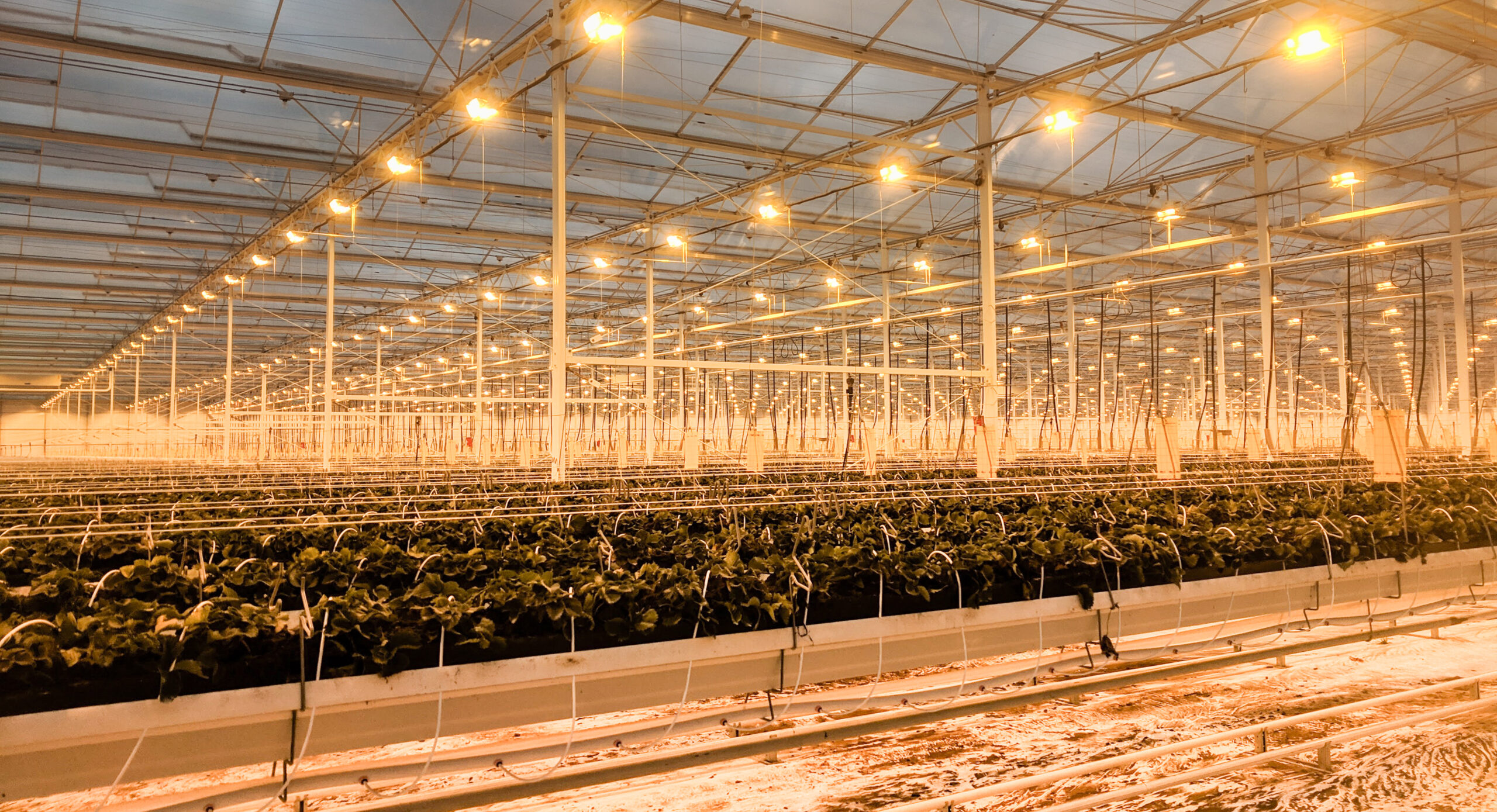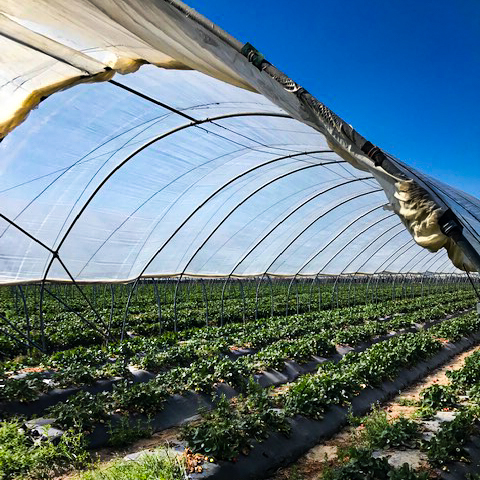Industry at the fore-front of innovation: How vertical farming and controlled environment might change strawberry production in the decades to come.
by Mark Hoffmann and Xiaonan Shi, NC State University.
The current COVID-19 pandemic makes the vulnerability of our food supply chains very evident, leaving many in need without access to sufficient food and nutrition, while overproduction and the urge to dispose perishable goods can’t be avoided in other places. Vulnerable food supply chains in a world of increasing urban populations, widespread malnutrition, decreasing water supplies and a rapidly changing climate underscore the need for more resilient and diversified food production and distribution systems. As response to this need, industry driven Ag Tech innovation has not only become an essential part of how future food production is envisioned, but already has led to a significant change in the agricultural sector altogether.
The most important and essential example is that virtually all breeding programs are using modern molecular breeding methods (e.g. marker-assisted breeding) to develop more resilient, productive and nutritious crop cultivars. Other examples encompass the use of intelligent shipping and container systems, field sensor technology, camera and image analytics, harvest and pest control robotics or the use of microbes to assess and manipulate plant health.
Today we want to shed light on one of those new technologies: Vertical farming and Controlled Environment Farming. Vertical farming, by definition, is a high-rise farming system, located in an urban area, using soilless growing systems under completely controlled environmental parameters (e.g. temperature, light, humidity, water, nutrition etc.). More than 30 US start-up companies are currently using vertical farming setups in some capacity, with industry leaders such as Aerofarms, Plenty or Bowery Farms using up to 90% less water and pesticides than conventional farming operations. However, while especially lettuce, herbs and microgreens are successfully grown crops in vertical farming and/or controlled environment systems, growing strawberries in such setups has been widely seen as too expensive until today. Recent improvement of technology and knowledge has led to the question as to whether or not this notion is about to change. With obvious factors such as high up-front costs and a challenging technology, we asked the questions: How feasible is vertical and controlled environment strawberry farming? How close are we today to buying strawberries from controlled environment farms? What are the challenges and obstacles? And what are the opportunities?
We have asked Dr. Chieri Kubota, professor of controlled environment farming at The Ohio State University, about the opportunities and challenges of strawberry production in a vertical farming and fully controlled environment setups. “I have been working on strawberries over 10 years to introduce strawberry as a crop to grow under controlled environment.” says Dr. Kubota. “The US is far behind in this effort, compared with Asia and Europe, and I wanted to help growers and businesses to do so.” Dr. Kubota sees the biggest opportunities for controlled environment strawberry production in urban areas, as a tool to shorten supply chains. “This would open the market for more potential cultivars that are flavorful but do not work in our existing supply chain because of the limited shelf life”. This is exactly what Plenty wants to do, a vertical farming start-up company with laboratories in Wyoming and the San Francisco Bay Area. Plentys’ vertical farm in South San Francisco grows flavorful leafy greens to be locally sold in the Bay Area, and now Plenty also wants to get into the strawberry business.
“I started seeing the effort realized by many companies but I know we have a lot more research to do”. Dr. Kubota says that lighting technology and HVAC technology are the key areas to investigate for indoor controlled environment using sole source lighting. More research also “needs to be developed for Integrated Pest Management under sole source lighting.” However, if asked what the role of controlled environment farming for strawberries will be in 2 decades from now, she answered that “it will become a significant means of horticultural crop production, co-existing with more traditional farming (outdoors and tunnels). Greenhouse is already a major means for tomato and some type of leafy greens and herbs and strawberry is a fastest growing greenhouse sector too” But she also sounds a not of caution: “But not all crops can be grown economically under controlled environment”.
Summary:
High start-up cost, the public distribution of excess energy, sufficient plant conditioning and a lack of vertical farming tailored strawberry breeding efforts are still obstacles for a wide application of vertical strawberry farming. While the cost break-even point is a key question for investors, costs are also expected to decrease with more efficient lighting systems, improved strawberry conditioning and breeding lines. It is very likely vertical strawberry farming will become a constant part of the world-wide strawberry industry in the future, especially attractive as local urban nutrition source with low pesticide usage.
Other strawberry production methods in protected culture:


Figure 1: Left: A greenhouse strawberry farm in Belgium/Europe and right: Hightunnel strawberry production in North Carolina.
Strawberry greenhouse operations are standard in Netherlands, Belgium and parts of Germany, often using supplemental lighting to produce strawberries year-round. Some European strawberry cultivars are specifically bred to perform in a greenhouse setting. Greenhouse strawberry production requires a sophisticated conditioning of strawberry plants, has large up-front costs, and requires in depth knowledge on water, substrate and nutrient management of strawberries. Also tunnel systems have higher up-front costs, and some systems are very work intensive (e.g. low tunnels). Especially insect and weed management can significantly change in tunnel systems, compared to open field systems. Some strawberry growers in North Carolina successfully use tunnel systems and greenhouses to extend strawberry harvest seasons.
Literature and Useful links:
The Vertical Farm: Feeding the World in the 21st Century by Dickson Despommier
University of Wageningen Vertical Farm Cost Calculator
Vertical Farms around the world with strawberry production: